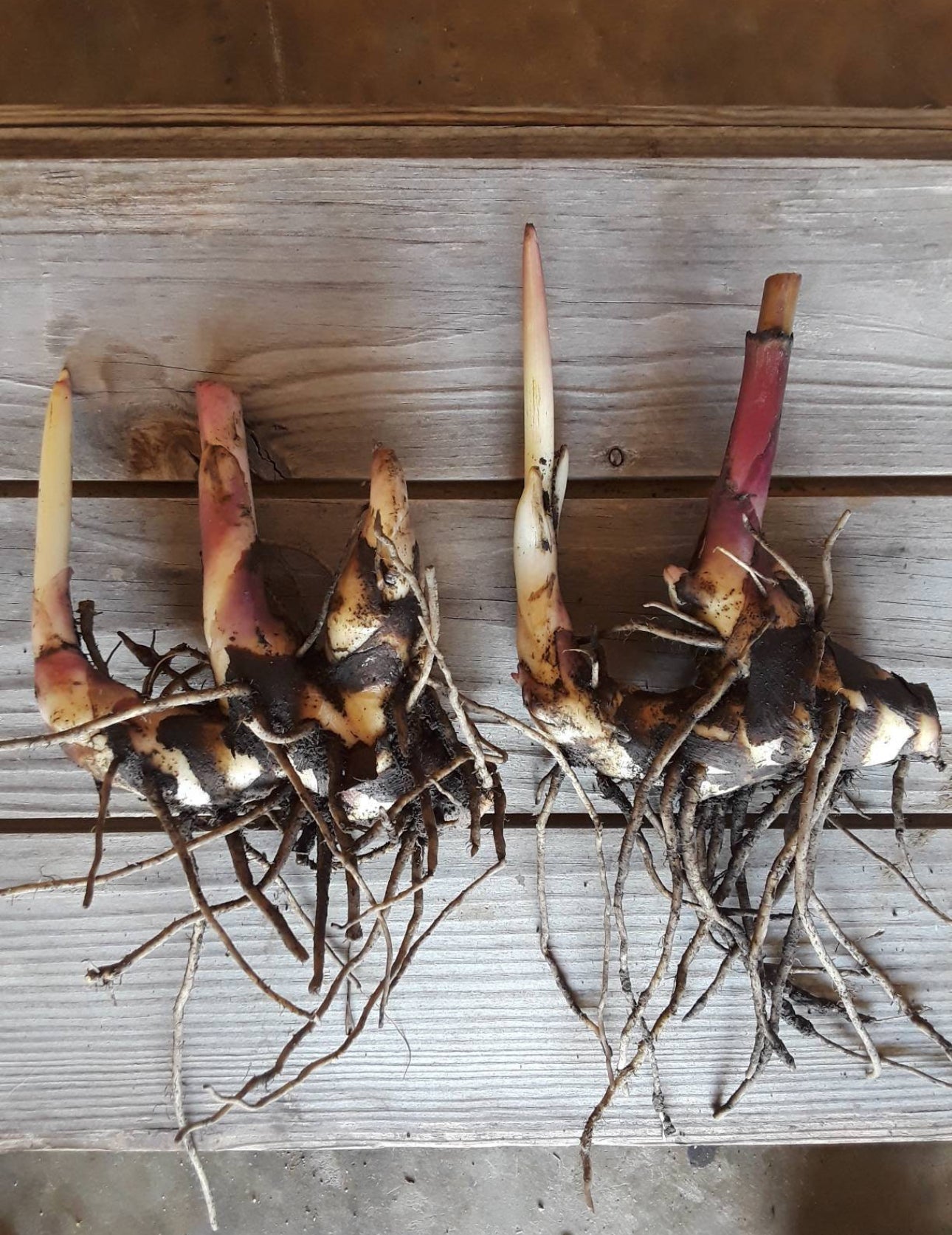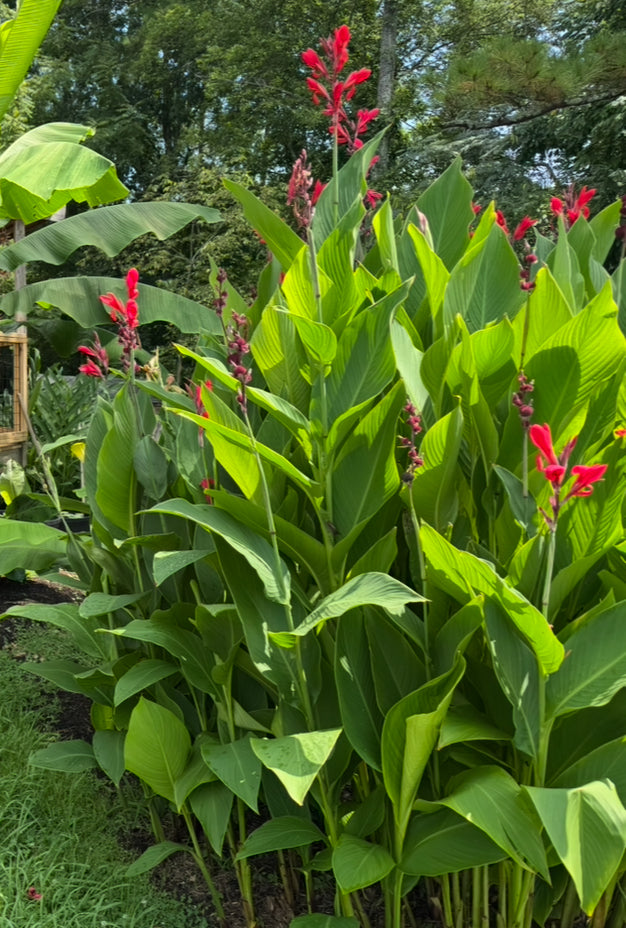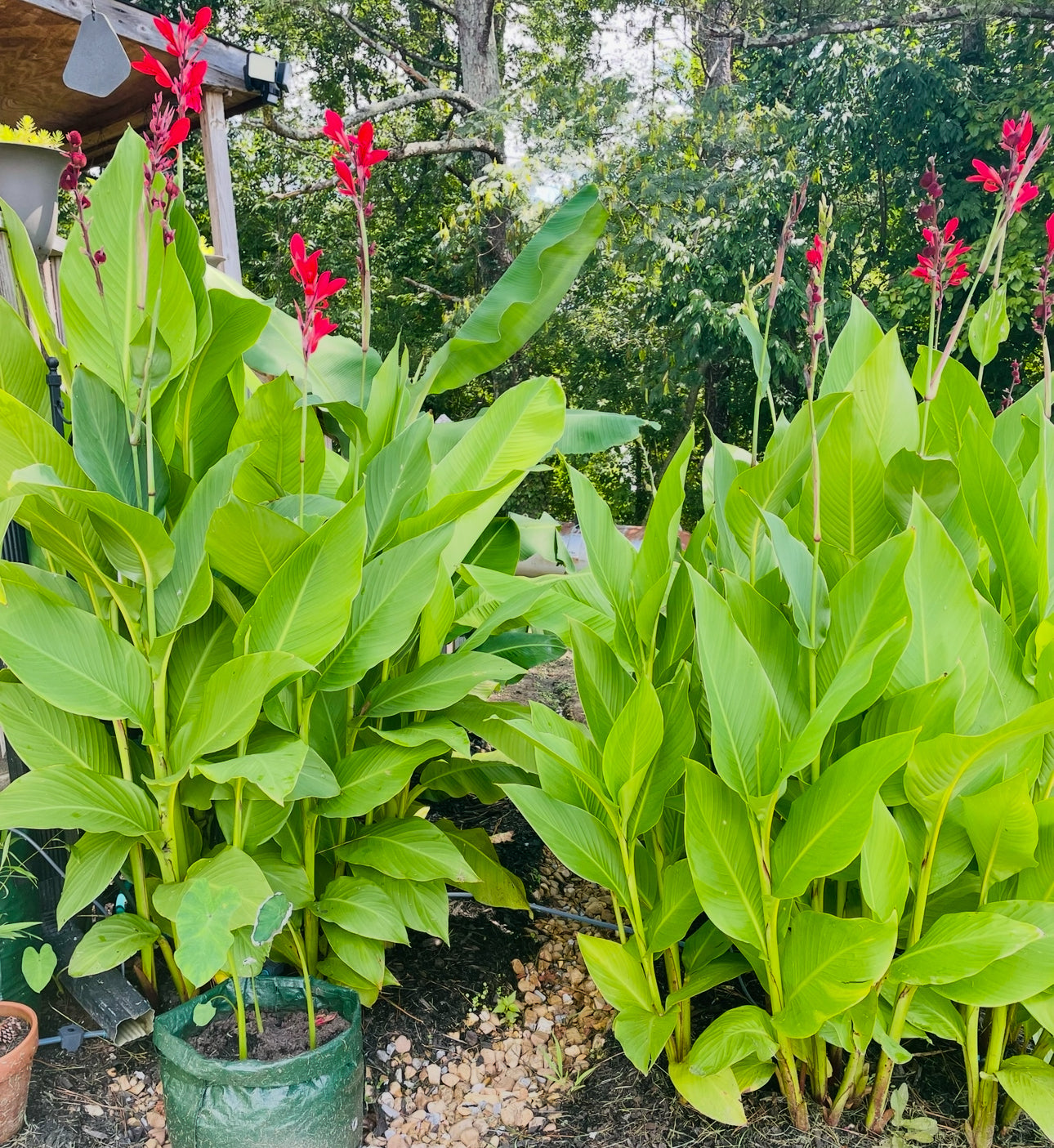Eden on Earth
Indian Shot - Canna Lily Rhizome
Indian Shot - Canna Lily Rhizome
Couldn't load pickup availability
SHIPPING NOW!
Canna Lily Rhizome (Indian Shot)
These canna lilies were hand-harvested and cleaned. They produce vibrant tropical flowers that bring color all summer long.
How to Plant and Grow Canna Lily Rhizomes
Canna Lilies are tropical and subtropical plants that add a bold, dramatic flair to any garden with their large, paddle-shaped leaves and vibrant flowers. Planting them from rhizomes is the easiest and most reliable way to enjoy their beauty.
1. Understanding Your Rhizome
-
What it is: A rhizome is a thick, fleshy, horizontal underground stem that stores nutrients and water.
-
Identifying Growth Points: Look for "eyes" or buds on the rhizome. These are small, raised bumps from which the new stems and leaves will grow. A healthy rhizome will be firm and plump.
2. Planting Your Canna Rhizome
When to Plant: Plant directly in the garden after all danger of frost has passed and the soil has warmed up. Alternatively, you can start them indoors in pots 4-6 weeks before your last frost date to give them a head start.
Step 1: Choose and Prepare the Location
-
Light: Cannas thrive in full sun (at least 6 hours of direct sunlight per day).
-
Soil: They prefer rich, organic, and well-draining soil. Before planting, work a generous amount of compost or well-rotted manure into the soil.
Step 2: Planting the Rhizome
-
Orientation: Plant the rhizome horizontally (lying on its side).
-
Depth: Dig a hole and place the rhizome 3-4 inches deep, with the eyes or growth points facing upwards. If you can't distinguish the top from the bottom, laying it horizontally is perfectly fine.
-
Spacing: Space rhizomes about 1 to 2 feet apart, depending on the mature size of the variety.
-
Watering: After planting, water the area thoroughly to settle the soil.
3. Ongoing Care
💧 Watering
-
Water Lovers: Cannas perform best with consistent moisture. Water them regularly and deeply, especially during hot, dry weather. They can even tolerate boggy conditions once established.
🌿 Fertilizing
-
Heavy Feeders: To support their rapid growth and prolific blooming, cannas benefit from regular feeding.
-
How to Fertilize: Apply a balanced fertilizer (e.g., 10-10-10) once a month throughout the growing season. Follow the application instructions on the product label.
✂️ Maintenance
-
Deadheading: To encourage continuous blooming, remove flowers as they fade. This prevents the plant from putting energy into seed production.
-
Grooming: Remove any tattered or yellowing leaves to keep the plant looking tidy.
🌡️ Winter Care
-
In Warm Climates (Zone 8-10): Canna rhizomes can be left in the ground year-round. Cut the foliage back to the ground after it's killed by frost and apply a layer of mulch for winter protection.
-
In Cold Climates (Zone 7 and colder): The rhizomes must be dug up and stored.
-
After the first frost has killed the foliage, cut the stalks down to about 4-6 inches.
-
Carefully dig up the clumps of rhizomes.
-
Gently remove excess soil (do not wash them).
-
Allow them to air dry for a few days in a cool, shady place.
-
Store the rhizomes in a cardboard box or paper bag with peat moss, sawdust, or vermiculite. Keep them in a cool, dark, and dry location (40-50°F / 4-10°C) until spring.
-
4. Pests and Diseases
-
Canna Leaf Roller: This caterpillar can stitch leaves together and feed from the inside. It's best to inspect plants regularly and treat with an appropriate insecticide if needed.
-
Japanese Beetles: Can sometimes be found feeding on the flowers.






